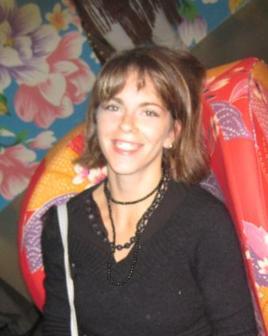Allegra Mascaro Anna Letizia

Professional Profile: Researcher (Employee)Activity field: ResearchMain office/laboratory: Sezione Sesto Fiorentino – LENSOffice phone number: 0554572504Laboratory phone number: 0554572018E-mail:  ResearcherID: L-3229-2018 OrcidID: 0000-0002-8489-0076 ScopusID: 36951684100
ResearcherID: L-3229-2018 OrcidID: 0000-0002-8489-0076 ScopusID: 36951684100
Primary activity: In the adult mammalian brain subtle reorganizations of axonal arbours occur under physiological conditions and after injury; the underlying mechanisms of neuronal plasticity in both physiological and post-lesional conditions remains largely unknown. Their elucidation would be a crucial step towards a better understanding of brain functioning and towards the possibility of an effective brain repair.In the last years two-photon microscopy has been used to perform in vivo high spatial resolution imaging of neurons, glial cells and vascular structures in the intact neocortex. This technique can be used to follow the time course of biological events in different cerebral compartments, characterizing the real dynamics of the neural network. The two-photon apparatus is a custom-made, upright, scanning microscope built in the Biophotonics Laboratory at LENS.Recently, in parallel to its applications in imaging, multi-photon absorption has been used as a tool for the selective disruption of neural processes and blood vessels in living animals. We exploit the optical nanosurgery setup in combination with the optical window preparation to perform in vivo imaging and ablation of fine structures in the cortex of live animals. This micro-scale model of neural degeneration is set up to characterize the remodeling properties of the network after injury. The spatial localization of multi-photon excitation is exploited to perform in vivo selective lesions on small subset of neurons in the somatosensory cortex of mice genetically expressing fluorescent proteins (GFP-M) without causing any visible collateral damage to the surrounding neuronal structures. Neurons are irradiated with a focused, controlled femtosecond energy dose and then the morphological consequences are characterized with time lapse 3D two-photon imaging.Following the temporal evolution of the injured system (either a neuron or a blood vessel) though time lapse in vivo imaging, we can characterize the physiological response of the target structure and follow the rearrangement of the surrounding area. Multi-photon nanosurgery in live brain represents a useful tool to reproduce different models of neural degeneration and finely characterize in vivo the evolution of the neural network after injury events.Main experiences acquired: Live imaging with two-photon microscopy
Laser nanodissection
Correlative two-photon and electron microscopy; correlative two-photon and light sheet microscopy
Wide-field microscopy
Image analysis
Microsurgery
Immunohistochemistry
PCR
Stroke modelsOthers Funded Projects in which he/she participates: Human Brain Project – SGA1Publications, Research Results, now, in INO’s database are: 26 – Papers JCR/ISI Journals, are: 26 – Books or Chapters, are: 0 – Papers in Journals not indexed JCR/ISI, are: 1 – Conference proceedings, are: 6 – Abstract, are: 0Bibliometric indices are calculated USING ONLY THE INO DATABASE and the number of citations from “WEB OF SCIENCE” (of Thomson Reuters) is updated at 2025-06-29 – maximum number of citations for an article: 198 – maximum impact factor (IF) for a journal when an article is published: 9.809 – H-INDEX: 12 G-INDEX: 25 HC-INDEX (contemporary): 8 – List of TopTen papers in citations – List of TopTen journals in Impact Factor
Laser nanodissection
Correlative two-photon and electron microscopy; correlative two-photon and light sheet microscopy
Wide-field microscopy
Image analysis
Microsurgery
Immunohistochemistry
PCR
Stroke modelsOthers Funded Projects in which he/she participates: Human Brain Project – SGA1Publications, Research Results, now, in INO’s database are: 26 – Papers JCR/ISI Journals, are: 26 – Books or Chapters, are: 0 – Papers in Journals not indexed JCR/ISI, are: 1 – Conference proceedings, are: 6 – Abstract, are: 0Bibliometric indices are calculated USING ONLY THE INO DATABASE and the number of citations from “WEB OF SCIENCE” (of Thomson Reuters) is updated at 2025-06-29 – maximum number of citations for an article: 198 – maximum impact factor (IF) for a journal when an article is published: 9.809 – H-INDEX: 12 G-INDEX: 25 HC-INDEX (contemporary): 8 – List of TopTen papers in citations – List of TopTen journals in Impact Factor

